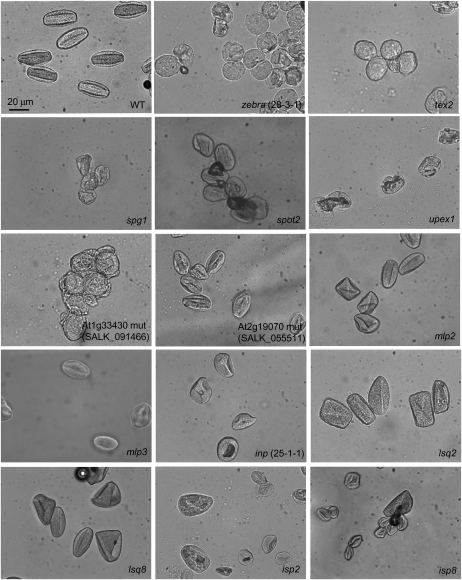Figure 3.
Examples of shape and size distortion in pollen grains observed in the mutants identified in the primary screen. Unhydrated pollen grains were visualized with Zeiss Axioskop. Magnification is the same for all images. WT, Wild type. The mutants shown were assigned to the following primary-screen classes based on their dissecting microscope pollen phenotypes: (1) glossy and/or sticky pollen (zebra [28-3-1], tex2, spg1, spot2, upex1, SALK_091466 [At1g33430], SALK_055511 [At2g19070], mlp2, and mlp3); (2) round pollen (inp [25-1-1]); (3) large and square pollen (lsq2 and lsq8); (4) irregular-size pollen (isp2 and isp8). Note that more details of pollen morphology are visible in the images obtained with this method than with the dissecting microscopes used for the primary screen. These images, therefore, do not serve to illustrate phenotypic differences used for mutant placement into five classes during the primary screen.

